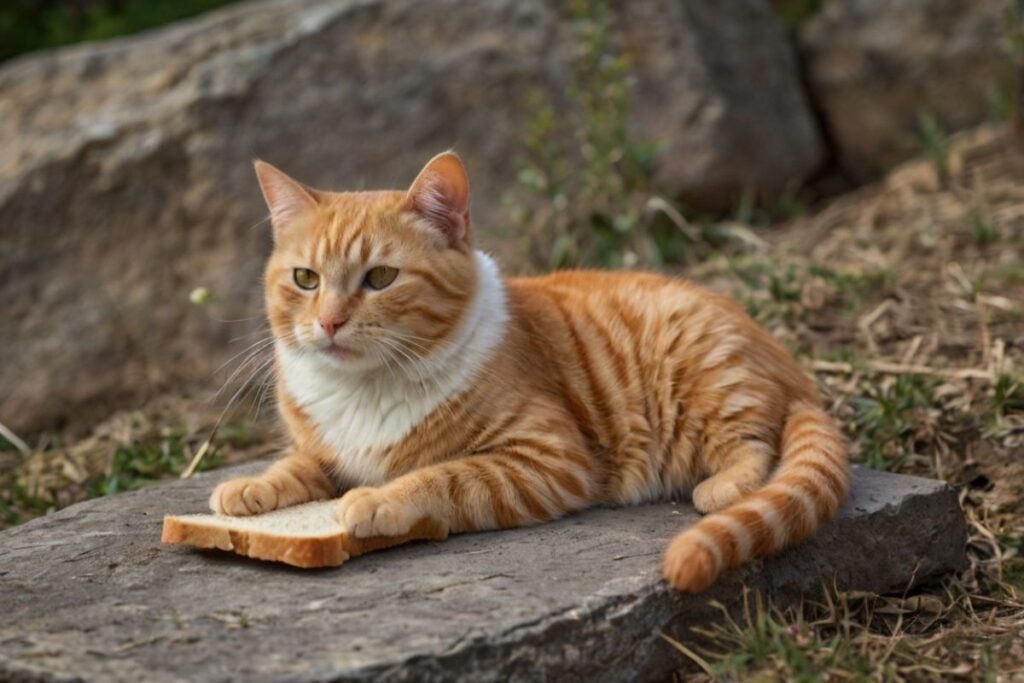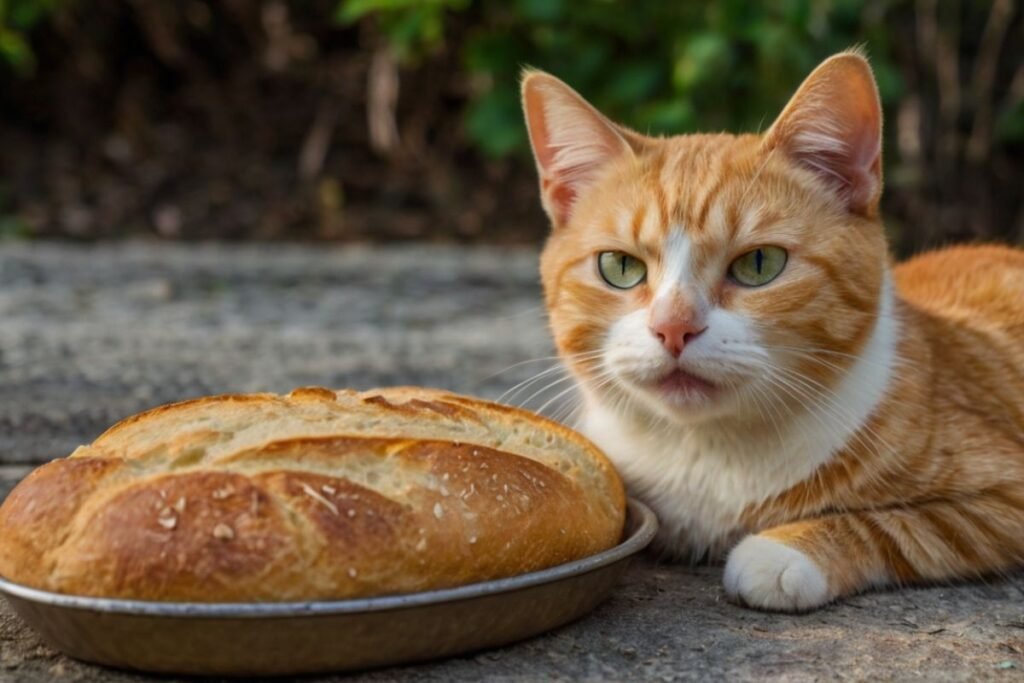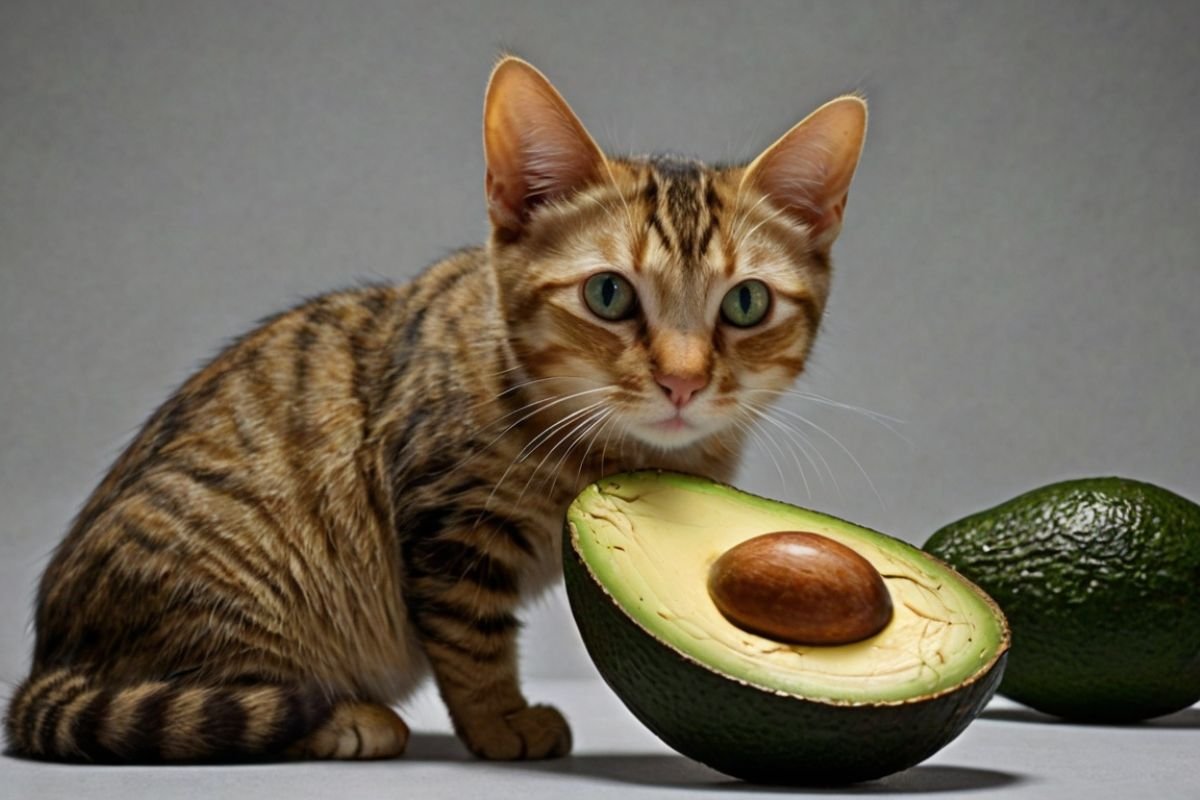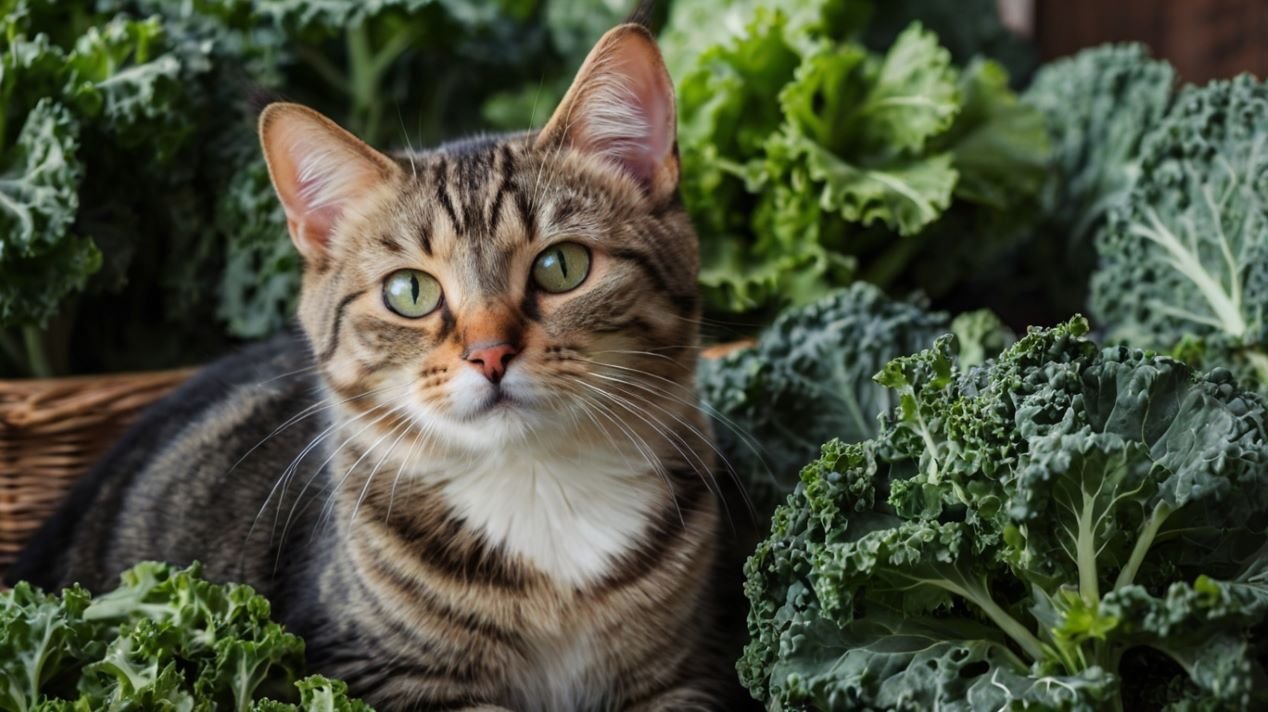The other day, I caught my orange tabby Rio staring intently at my sandwich. His big round eyes followed every bite, and when I set my plate down for a moment, his paw darted out to snag a piece of bread crust. This got me thinking—can cats eat bread safely? Is my little bread thief putting himself in danger?
If you’ve ever shared your home with a curious cat, you know they can show interest in the oddest human foods. Bread, that simple staple in most kitchens, often catches their attention. But should we share this everyday food with our feline friends?
This question isn’t as simple as it might seem. Cats are obligate carnivores, which means their bodies are designed primarily for meat consumption. Yet many cat owners have stories about their pets begging for a nibble of toast or stealing a piece of dinner roll.
In this comprehensive guide, we’ll explore everything you need to know about cats and bread. We’ll look at the safety concerns, nutritional aspects, and even uncover which bread types pose genuine dangers to your furry companion. By the end, you’ll have clear answers about whether that piece of bread is a harmless treat or something to keep far from your cat’s curious paws.

Table of Contents
Can Cats Eat Bread? The Quick Answer
Yes, cats can eat plain bread in small amounts. Bread is not toxic to cats. However, bread offers almost no nutritional value for felines and should never be a regular part of their diet.
Think of bread for cats like candy for humans—it’s not harmful in tiny amounts, but it’s not good for them either. The occasional small piece of plain bread won’t hurt your cat, but it shouldn’t become a habit.
Also read: Can Cats Eat Peanut Butter?
Why Cats Might Want Bread
You might wonder why cats show interest in bread at all. There are a few reasons:
- Curiosity: Cats are naturally curious about what their humans eat.
- Texture: Some cats enjoy the chewy texture of bread.
- Smell: Yeast in bread can create smells that cats find interesting.
- Fat content: Bread often contains fats that cats can detect and may find appealing.
Rio, my ginger boy, seems mostly drawn to the butter on toast. When I have plain bread, he shows less interest, but add some butter and suddenly he’s my shadow!
The Nutritional Reality: What Cats Actually Need
To understand why bread isn’t ideal for cats, we need to look at what cats actually need in their diet:
Cats need:
- High-quality protein from animal sources
- Taurine (an amino acid found only in animal tissues)
- Animal-based fats
- Minimal carbohydrates
- Specific vitamins and minerals in the right amounts
What bread provides:
- Mostly carbohydrates
- Plant-based proteins (not ideal for cats)
- No taurine
- Few nutrients that cats need
Cats have evolved as hunters, not gatherers. Their digestive systems lack certain enzymes needed to process plant materials effectively. They don’t need carbs the way we do, and their bodies are designed to get energy from proteins and fats.
When Is Bread Harmful to Cats?
While plain bread isn’t toxic, certain types of bread can be harmful or even dangerous:
Bread Dough
Raw bread dough is extremely dangerous for cats. Here’s why:
- Expansion: In the warm environment of a cat’s stomach, yeast in raw dough continues to rise, causing painful stomach expansion.
- Alcohol production: Fermentation of dough produces alcohol, which can lead to alcohol poisoning in cats.
Signs of bread dough poisoning include:
- Bloated abdomen
- Lethargy
- Weakness
- Disorientation
- Vomiting
- In severe cases, seizures or coma
If your cat eats raw dough, contact your vet immediately. This is a true emergency.
Garlic or Onion Bread
Garlic and onions belong to the Allium family, which is toxic to cats. Even in small amounts, these ingredients can damage your cat’s red blood cells, leading to anemia.
Watch out for:
- Garlic bread
- Onion bread
- Many flavored bread types
- Some dinner rolls with added seasonings
Raisin Bread or Bread with Dried Fruits
Raisins and certain other dried fruits are toxic to cats and can cause kidney failure. Never let your cat eat:
- Raisin bread
- Hot cross buns
- Fruit loaf
- Holiday breads with dried fruits
Breads with Chocolate, Nuts, or Xylitol
These ingredients are all dangerous for cats:
- Chocolate contains theobromine, which cats cannot metabolize.
- Some nuts, particularly macadamia nuts, are toxic to pets.
- Xylitol, an artificial sweetener sometimes found in specialty breads, is extremely toxic to animals.
Very Salty Breads
Too much salt is bad for cats. Pretzels, some bagels, and heavily salted bread types can lead to salt poisoning in cats if eaten in quantity.
Safe Bread Options (In Small Amounts)
If you do want to share a tiny bit of bread with your cat occasionally, these types are safest:
- Plain white bread (with no additives)
- Plain wheat bread
- Plain dinner rolls
- Plain bagels (not salted versions)
Always ensure the bread is fully baked and contains no harmful ingredients.
How Much Bread Is Too Much?
Even safe bread should be given in very small amounts. A piece the size of a pea or small fingernail is plenty for a cat. Any more than that is unnecessary and potentially problematic.
Think of it this way: A small piece of bread to a 10-pound cat is like you eating several slices. The calories add up quickly for their small bodies.
Some issues with giving too much bread include:
Weight Gain
Bread is calorie-dense but not nutritionally valuable for cats. Regular bread treats can lead to weight gain, which brings health problems like:
- Diabetes
- Joint pain
- Heart issues
- Reduced lifespan
- Difficulty grooming
Digestive Issues
Too much bread can cause:
- Constipation
- Upset stomach
- Gas
- Diarrhea
Nutritional Imbalance
Filling up on bread means less room for nutritious cat food. This can lead to nutritional deficiencies over time.
Signs Your Cat May Have Bread-Related Issues
Watch for these signs after your cat eats bread:
- Vomiting
- Diarrhea
- Lethargy
- Loss of appetite
- Excessive thirst
- Unusual behavior
If you notice any of these symptoms, especially after eating specialty breads that might contain harmful ingredients, contact your vet.
The Cat Nutrition Basics: What Should Cats Really Eat?
For optimal health, cats need:
Protein
Cats need high-quality animal protein. Unlike humans and some other pets, cats cannot get all their essential amino acids from plant sources. They specifically need animal-derived proteins.
Taurine
This amino acid is essential for cats but not found in plant materials (including bread). Without enough taurine, cats can develop heart problems and vision issues.
Animal Fats
Cats need certain fats in their diet for energy and to absorb vital nutrients. They process animal fats better than plant oils.
Water
Many cats don’t drink enough water naturally. Wet food helps provide hydration.
Minimal Carbohydrates
While cats can digest some carbs, they don’t need many. Their natural diet would be very low in carbohydrates.
A quality cat food will meet all these needs in the right proportions. Treats like bread should make up no more than 10% of a cat’s daily caloric intake, with the other 90% coming from complete and balanced cat food.
Healthier Alternatives to Bread for Cats
Instead of bread, consider these safer treats for your feline friend:
- Commercial cat treats: Formulated specifically for cats’ nutritional needs.
- Small pieces of cooked meat: Plain chicken, turkey, or fish (no seasonings).
- Freeze-dried meat treats: These maintain nutrition while being shelf-stable.
- Tiny bits of cheese: Most cats can handle small amounts of cheese (if not lactose intolerant).
- Commercial cat grass: For cats who like to nibble on plants.
My Rio goes crazy for tiny bits of plain cooked chicken. It’s a much better option than bread, and I know it aligns with his natural dietary needs.
Why Do Cats Beg for Human Food?
If your cat, like my Rio, seems determined to sample your sandwich, it’s likely not about nutritional needs but rather:
- Social bonding: Sharing food is a social activity. Your cat may want to participate in what you’re doing.
- Curiosity: Cats are naturally curious about new smells and tastes.
- Jealousy: Some cats don’t want their humans focusing on anything else—even food.
- Learned behavior: If you’ve shared food before, your cat learns to expect it.
How to Discourage Bread-Stealing Behavior
To keep your cat from swiping bread:
- Store bread properly: Keep bread in closed containers or breadboxes.
- Never leave bread unattended: Especially when you have a known bread thief like my Rio!
- Provide regular meals: Make sure your cat isn’t stealing food due to hunger.
- Give appropriate attention: Sometimes cats beg for food when they really want attention.
- Establish boundaries: Be consistent about not feeding from the table.
- Provide alternatives: Give a cat treat at your mealtime so they don’t feel left out.
My Experience With Rio and Bread
I’ll share a quick story about Rio, my orange tabby, and his bread adventures. When he was just a year old, I made the mistake of leaving freshly baked bread cooling on the counter. I stepped away for just a few minutes, and when I returned, there was Rio, happily pawing at the loaf!
Thankfully, the bread was fully baked and plain, so there was no harm done—other than the claw marks in my beautiful loaf. But this taught me an important lesson about cat-proofing my baked goods.
Now I make sure all bread is safely stored away from curious paws. For Rio, I keep special cat treats on hand for when I’m enjoying my own food. This way, he gets something appropriate while I get to eat my sandwich in peace.
Common Questions About Cats and Bread

Can bread kill cats?
Plain, baked bread is not lethal to cats. However, raw bread dough can be life-threatening, as can bread with toxic ingredients like raisins, garlic, onions, or xylitol.
Do cats like the taste of bread?
Some cats seem to enjoy bread’s taste or texture, while others show no interest. Preferences vary widely among individual cats.
Can cats eat toast?
Cats can have very small amounts of plain toast. However, toast with toppings like butter, jam, or peanut butter is not recommended due to fat, sugar, and potential xylitol in some spreads.
Can cats eat bread crust?
Bread crust is no more harmful than the rest of the bread. Small amounts of plain crust are fine for most cats.
Is white or brown bread better for cats?
Neither is “better” for cats, as bread is not a natural part of their diet. If offering a tiny piece as a treat, either is fine as long as it contains no harmful ingredients.
Can kittens eat bread?
It’s best not to give bread to kittens. Their small size makes them more vulnerable to problems, and they need highly nutritious food for proper growth.
What should I do if my cat ate a large amount of bread?
For plain baked bread, monitor for digestive upset. For raw dough or bread with toxic ingredients, contact your vet immediately.
Why does my cat go crazy for bread?
Some cats are attracted to the yeast smell in bread. Others may be interested in fats in the bread or simply curious about what you’re eating.
Conclusion: The Bread Bottom Line
So, can cats eat bread? Technically yes, in small amounts, plain bread is not toxic to cats. But should they eat bread? Generally, no. Bread offers little nutritional value for cats and can contribute to weight gain and other health issues if given regularly.
Remember these key points:
- Plain, fully baked bread in tiny amounts is generally safe.
- Raw dough is extremely dangerous and should never be accessible to cats.
- Flavored breads with ingredients like garlic, onions, raisins, or chocolate can be toxic.
- Bread should never replace proper cat food in their diet.
- Better treat options exist that align with cats’ nutritional needs.
As cat owners, we want to make our feline friends happy. Sometimes this means saying no to those pleading eyes when they beg for a bite of our sandwich. The momentary disappointment is far better than potential health problems down the road.
Rio may give me the cold shoulder when I refuse to share my toast, but I know I’m being a responsible pet parent by keeping him on a diet that meets his true nutritional needs. After all, I want him to stay healthy and happy for many years to come.
For all aspects of your cat’s diet, when in doubt, check with your veterinarian. They can provide guidance specific to your cat’s individual health needs and help you navigate the sometimes confusing world of pet nutrition.
In the end, the best way to show our cats love isn’t by sharing our human food—it’s by providing them with the proper nutrition they need to thrive. And maybe an extra chin scratch instead of that piece of bread.

Shahriar Robin is the creator of WhatPetsCanEat.com, a passionate pet lover and dedicated cat dad to Rio, a curious two-year-old orange feline who inspired this website. With a love for animals and a knack for research, Shahriar shares trusted, easy-to-understand information to help fellow pet owners make safe, healthy food choices for their furry friends.


